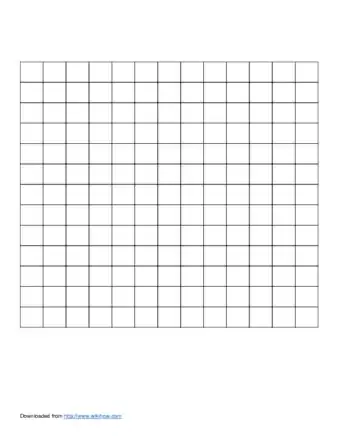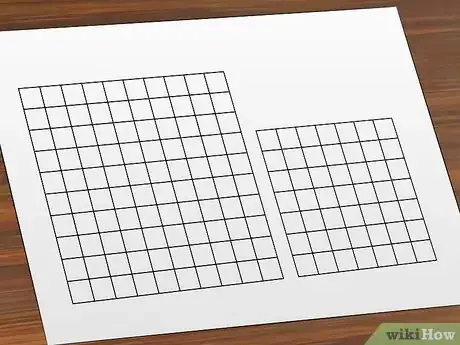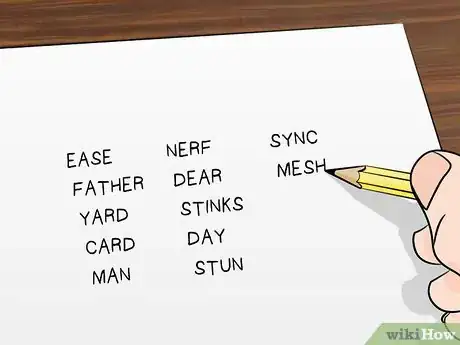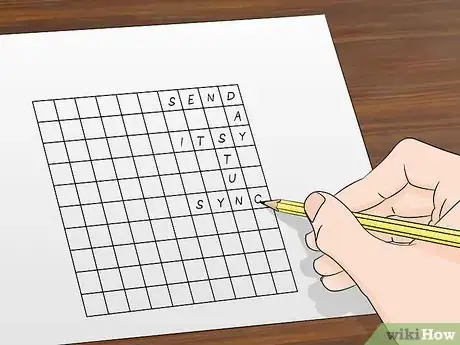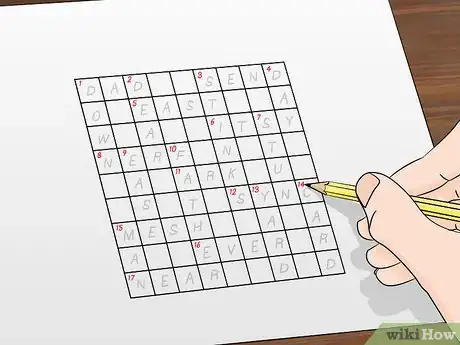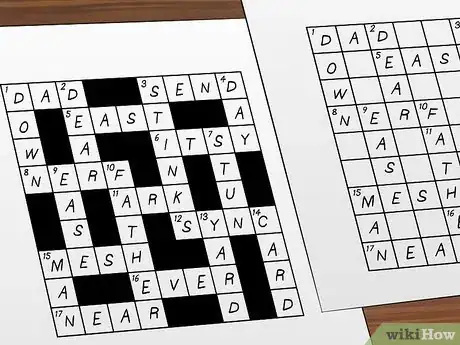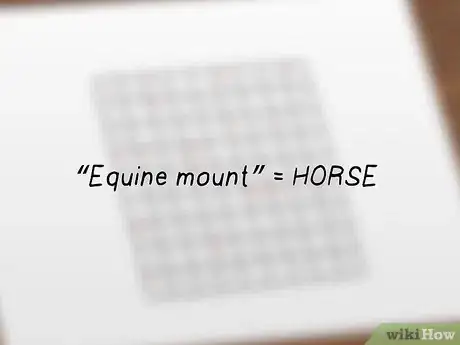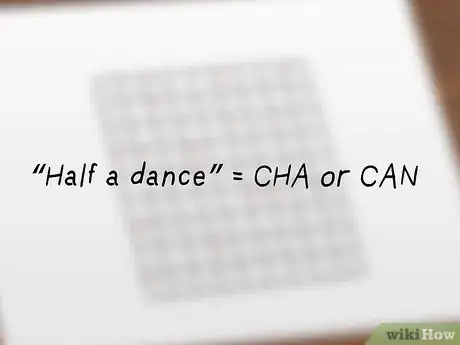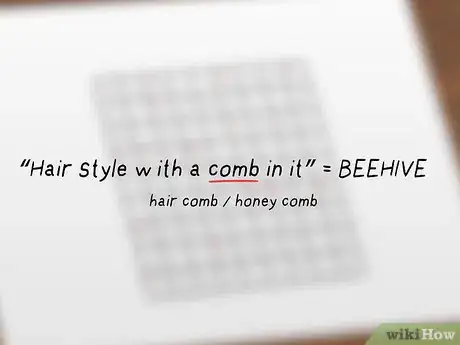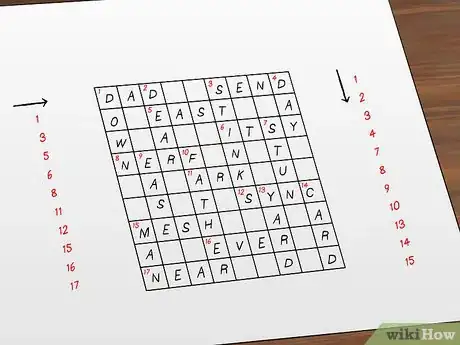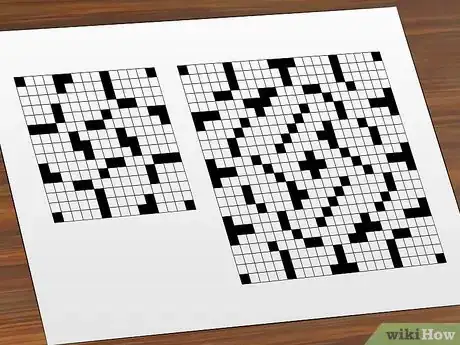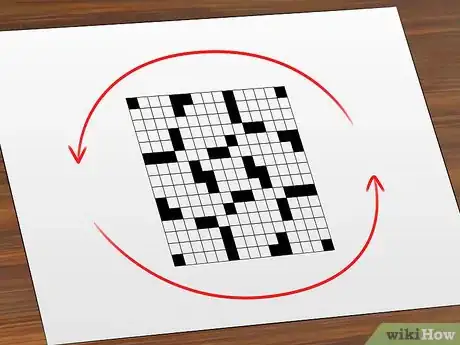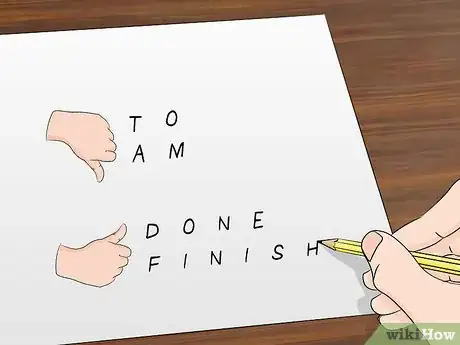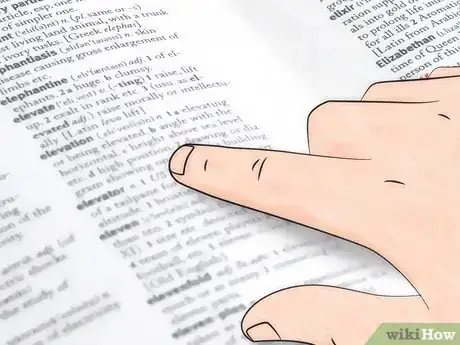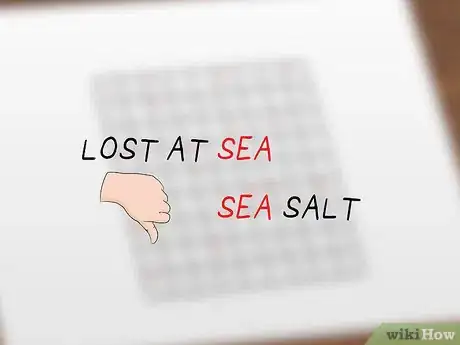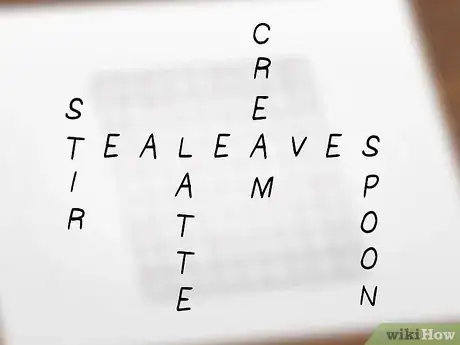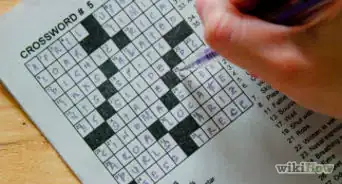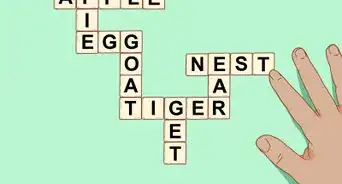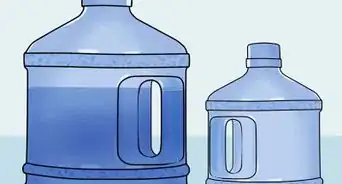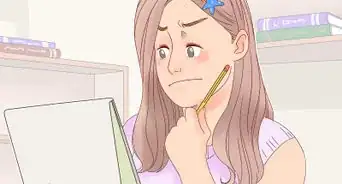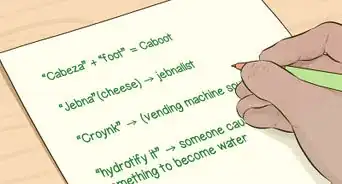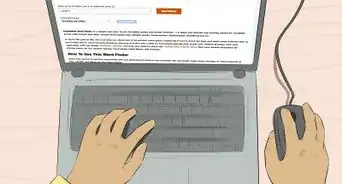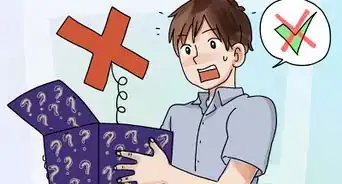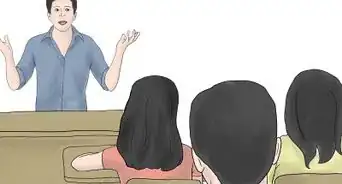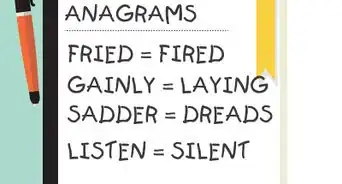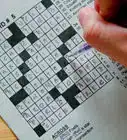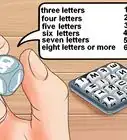wikiHow is a “wiki,” similar to Wikipedia, which means that many of our articles are co-written by multiple authors. To create this article, 36 people, some anonymous, worked to edit and improve it over time.
There are 8 references cited in this article, which can be found at the bottom of the page.
wikiHow marks an article as reader-approved once it receives enough positive feedback. In this case, several readers have written to tell us that this article was helpful to them, earning it our reader-approved status.
This article has been viewed 444,847 times.
Learn more...
Crossword puzzles and other mind games generate hours of healthy fun, and are credited with keeping minds agile. They're also excellent educational tools, allowing you to engage your students and encourage them to connect concepts with vocabulary. For some people, creating a crossword puzzle is just as rewarding as solving one. The process can be very simple, or very involved, depending on your interest level.
Steps
Printable Crossword Template
Grid Design
-
1Decide on a grid size. If you’re trying to make a more official, standardized crossword puzzle, there are specific dimensions you have to adhere to. If you’re making a more casual puzzle, though, you can pick whatever size you want.
-
2Make a list of words for your crossword puzzle. Usually you'll select words according to a theme of your choosing.[3] That theme, or a clue to it, can then become the title of the puzzle. Examples of common themes include foreign places or languages, words from a certain time period, famous people, and sports.Advertisement
-
3Lay the words out in a grid format. This part of the process can feel as challenging as actually solving a crossword puzzle. Once you've laid the words out, black out any unused squares.
- In a US style crossword, there should be no “hanging words,” or words that do not connect to other words. Every letter should correspond to both an Across word and a Down word, and be totally interconnected.[4] In a UK style crossword, hanging words are permitted.
- If the answer to a clue is a phrase rather than a single word, there should be no spaces between the words.
- You don’t need to worry about capitalizing proper nouns in your answers, as crosswords are usually filled out in all caps. The answers should not include punctuation either.
- Many crossword puzzle creators automatically lay the words out for you. All you do is specify puzzle size and input the list of words and clues.[5] [6]
-
4Number the starting square for each word. Begin in the upper-left corner of the puzzle, and divide the words by whether they run vertically or horizontally, so that you have a “1 Down,” and a “1 Across,” etc. This can also be pretty mind-bending, and many people prefer to use software instead of doing it all manually.
-
5Create a copy of the crossword puzzle. This time the starting square for each word should be numbered, but the squares themselves should be otherwise blank. If you’re creating your puzzle by hand this will be a bit more labor intensive, but if you’re using a crossword puzzle creator it should be done for you. Set aside the filled-in puzzle for use as an answer key. You can make as many copies of the blank one as you need.
Clues
-
1Begin with some straightforward clues. These are referred to as “quick” or “straight” clues, and are generally the easiest to write and to solve. An example might be “Equine mount” = HORSE.
- If you are making a crossword as an educational tool, or just don’t want to make things too complicated, you can use quick clues exclusively, but if you want to make a more challenging puzzle, you will probably want to avoid them, or use them sparingly.[9]
-
2Add another level of challenge with indirect clues. These generally involve some sort of metaphor, or rely on lateral thinking. An example might be “Half a dance” = CHA or CAN (taken from Chacha or Cancan).
- Crossword creators often indicate this type of clue by beginning with “maybe” or “perhaps,” or by ending the clue with a question mark.
-
3Use cryptic clues. This type of crossword clue is far more popular in the UK than in the US. You will often find cryptic clues in puzzles specifically designated, “cryptic crosswords,” but if they are found in more general puzzles they will often be indicated by a question mark at the end. They rely on various kinds of word play, and usually involve multiple levels of puzzling out. There is a huge number of sub-types within the cryptic clue category.[10]
- Purely cryptic clues are, essentially, puns. Thus “Hair style with a comb in it” = BEEHIVE, as “comb” can refer to a hair comb or a honeycomb.
- Reversals require solving a cryptic clue and then reversing the solution. For example, “Go no further putting the crockery up” = STOP. This is solved by translating “crockery” to “pots,” and then inverting “pots” to get “stop.” Note that the solution is also hinted at by the phrase, “go no further.”
- Palindromes are often indicated by phrases like “either way” or “up and down.” They involve finding an anagram that works as a solution to a cryptic clue. An example would be “Advance in either direction” = PUT UP, because “to put up” can be another way of saying “to advance,” and is also a palindrome (a word that is spelled the same forwards and backwards.)
-
4
Rules & Guidelines
-
1Use one of the standard sizes. Simon & Schuster are the original crossword puzzle publishers, and they introduced the official standards that professional crossword puzzle creators use. One of these standards is that puzzles must be one of five grid sizes: 15×15, 17×17, 19×19, 21×21 or 23×23.[13] The larger the grid, of course, the more difficult the puzzle.[14]
-
2Make sure the diagram has 180-degree rotational symmetry. In this context, “diagram” refers to the arrangement of blacked out squares on your grid. These should be arranged so that if you flipped the graph, the blacked out squares would be in the same places.[15]
-
3
-
4
-
5Use each word only once. If one of the phrases in your puzzle is “lost at sea,” you shouldn’t also use “sea salt.” Again, certain themes may give you some degree of flexibility, but you should tread carefully.[21]
-
6
Community Q&A
-
QuestionIs there a program with a blank grid in which I can enter my words, black out the spaces and make ready to print?
 KrisvdmCommunity AnswerYes. You can do it through the puzzlefoundry.com website. It also has a crossword builder and word-pattern search functionality.
KrisvdmCommunity AnswerYes. You can do it through the puzzlefoundry.com website. It also has a crossword builder and word-pattern search functionality. -
QuestionI'm making my own crossword. How can I black out or delete spaces that are not filled with a word?
 Community AnswerYou can black them out with a pen or marker, if you've printed it out. If you're doing it on the computer before printing, you can do it with Paint or a similar program (using the paint bucket tool).
Community AnswerYou can black them out with a pen or marker, if you've printed it out. If you're doing it on the computer before printing, you can do it with Paint or a similar program (using the paint bucket tool). -
QuestionHow do I make a crossword in a spreadsheet?
 Community AnswerHighlight the number of squares that will be used, then click border. It will make your crossword puzzle stand out.
Community AnswerHighlight the number of squares that will be used, then click border. It will make your crossword puzzle stand out.
References
- ↑ http://puzzlemaker.discoveryeducation.com/CrissCrossSetupForm.asp
- ↑ http://tools.atozteacherstuff.com/free-printable-crossword-puzzle-maker
- ↑ http://mentalfloss.com/article/58828/how-crossword-puzzles-are-made
- ↑ http://www.teazel.com/articles/crossword-clue-types
- ↑ http://puzzlemaker.discoveryeducation.com/CrissCrossSetupForm.asp
- ↑ http://tools.atozteacherstuff.com/free-printable-crossword-puzzle-maker
- ↑ http://puzzlemaker.discoveryeducation.com/CrissCrossSetupForm.asp
- ↑ http://tools.atozteacherstuff.com/free-printable-crossword-puzzle-maker
- ↑ http://www.teazel.com/articles/crossword-clue-types
- ↑ http://www.teazel.com/articles/crossword-clue-types
- ↑ http://www.slate.com/blogs/lexicon_valley/2014/11/12/how_to_make_a_crossword_rules_for_creating_new_york_times_style_puzzles.html
- ↑ http://mentalfloss.com/article/58828/how-crossword-puzzles-are-made
- ↑ http://www.crossdown.com/howtomake.htm
- ↑ http://barelybad.com/xwdwriteyourown.htm
- ↑ http://mentalfloss.com/article/58828/how-crossword-puzzles-are-made
- ↑ http://www.crossdown.com/howtomake.htm
- ↑ http://barelybad.com/xwdwriteyourown.htm
- ↑ http://mentalfloss.com/article/58828/how-crossword-puzzles-are-made
- ↑ http://barelybad.com/xwdwriteyourown.htm
- ↑ http://www.crossdown.com/howtomake.htm
- ↑ http://barelybad.com/xwdwriteyourown.htm
- ↑ http://www.crossdown.com/howtomake.htm
- ↑ http://barelybad.com/xwdwriteyourown.htm
About This Article
To make a basic crossword puzzle, make a list of the words you want to use in your puzzle and then arrange them both horizontally and vertically in a grid format. Then, color any square that doesn’t have a letter so that it’s completely black. Number the starting square for each word, and write a clue about what that word might be. Create a copy of the crossword puzzle that’s blank, and distribute it. For more information on how to write clues for your crossword puzzle, keep reading!
